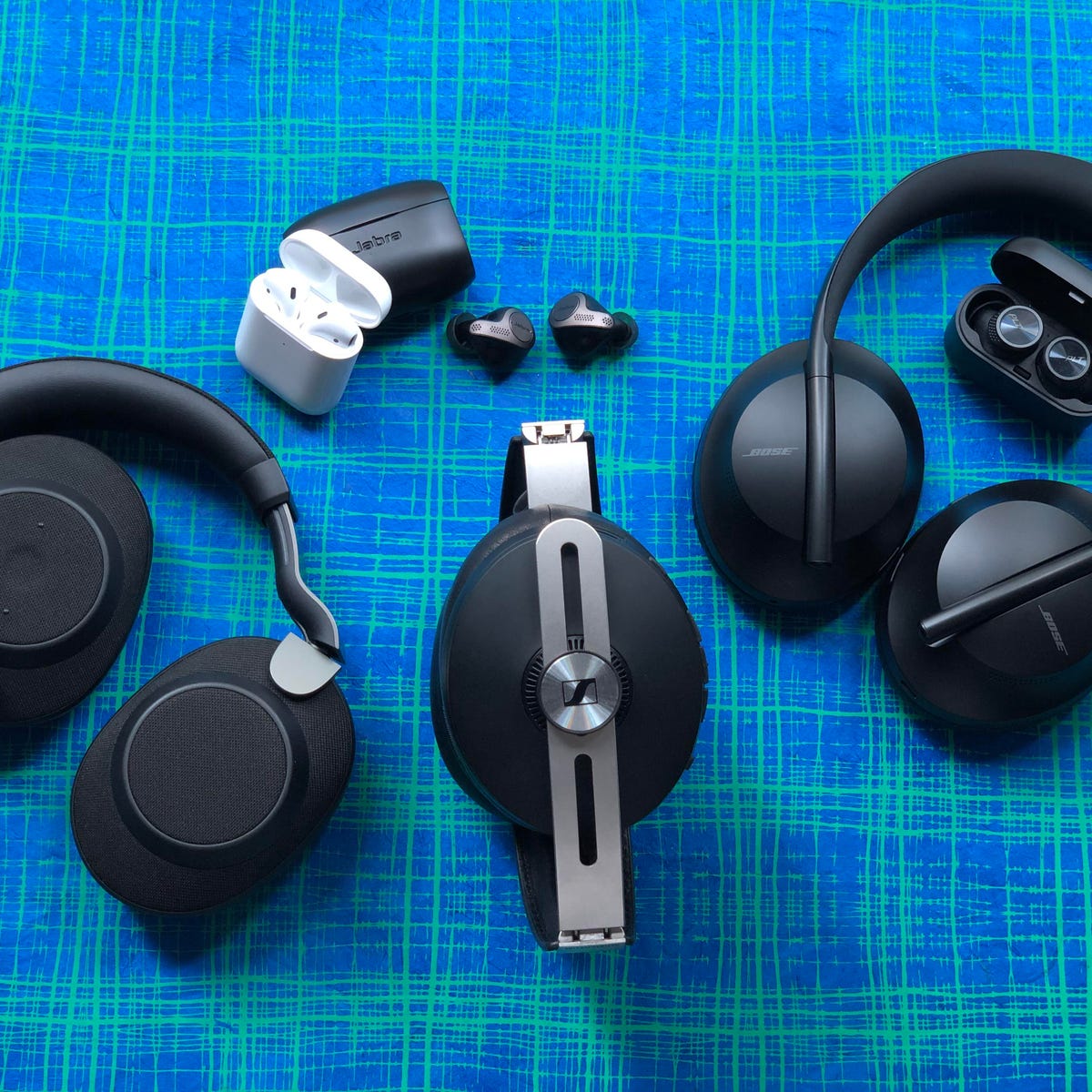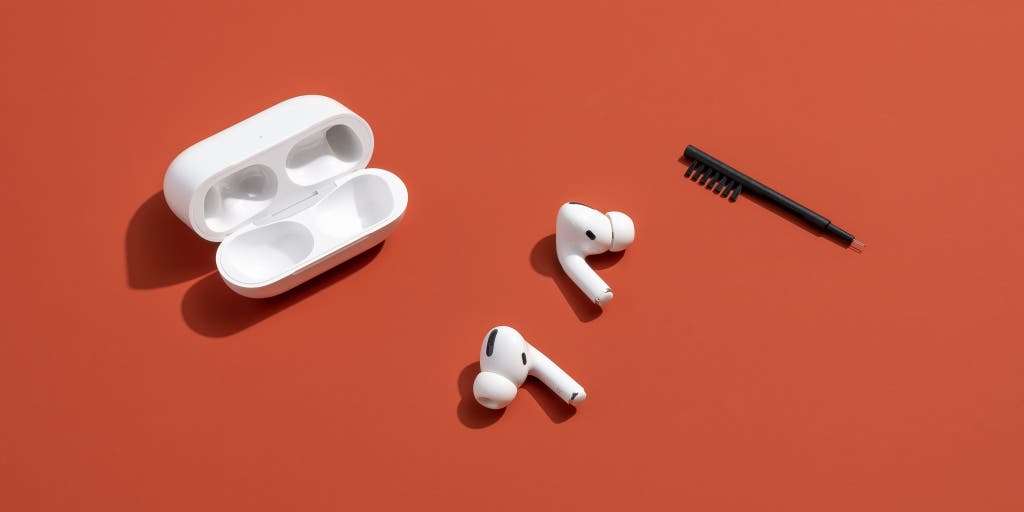Headphones are valuable assets that help us to immerse ourselves in music or stay connected with friends and colleagues. But just like any other electronic device, they require proper care and maintenance to ensure they last long and perform efficiently. In this article, we will give you some headphone care tips.
Understanding Headphone Components
Ear Cups: The Components of Comfort
Ear cups are the cushions that rest against your ears, providing comfort during prolonged use. They also house the headphone drivers, which produce sound and contribute to audio quality. Choosing headphones with soft, breathable ear cups can enhance comfort and prevent discomfort during extended wear.
Drivers and Sound Quality: The Heart of Your Headphones
To transform electrical signals into sound waves, your headphones’ drivers are their brains. Different types of drivers, such as dynamic drivers, balanced armature drivers, and planar magnetic drivers, offer varying sound characteristics. Understanding the type of drivers in your headphones can help you appreciate their sound profile and make informed purchasing decisions.
Cables and Connectors: Ensuring Seamless Connectivity
Cables and connectors transmit audio signals from your device to the headphone drivers. Opt for headphones with durable cables and connectors to prevent signal loss and audio interruptions. Regularly inspect cables and connectors for signs of wear or damage, such as fraying or loose connections, and replace them as needed to maintain optimal audio performance.
Cleaning Your Headphones
Regular Maintenance: Keeping It Clean
Regular cleaning is essential to remove dirt, dust, and oils that accumulate on the surface of your headphones. Use a soft, dry cloth to wipe down the ear cups, headband, and cables to remove surface debris. For deeper cleaning, use a mild cleaning solution and a soft brush to gently scrub away stubborn dirt and grime.
Deep Cleaning Techniques: Going the Extra Mile
Deep cleaning involves removing ear pads and cleaning hard-to-reach areas, such as the headphone drivers and hinges. Use compressed air or a soft brush to remove debris from crevices and vents. Avoid using harsh chemicals or abrasive cleaners, as they can damage the delicate surfaces of your headphones.
Choosing the Right Cleaning Products: Gentle Solutions for Delicate Surfaces
Select cleaning products specifically designed for use on electronic devices, such as alcohol-free wipes or cleaning sprays. Avoid using abrasive materials, such as paper towels or rough cloths, as they can scratch or damage headphone surfaces. When in doubt, consult the manufacturer’s guidelines for recommended cleaning products and techniques.
Proper Storage
Storing Your Headphones: A Safe Haven
Proper storage is essential to protect your headphones from dust, moisture, and physical damage. Store your headphones in a clean, dry place away from direct sunlight and extreme temperatures. Consider investing in a headphone stand or storage case to keep your headphones organized and protected when not in use.
Traveling with Your Headphones: Protection On the Go
When traveling with your headphones, use a protective carrying case to shield them from bumps and impacts. Avoid packing headphones tightly in a bag or suitcase, as this can damage the ear cups or headband. If traveling with wireless headphones, remember to pack the charging cable and any necessary accessories to ensure uninterrupted use.
Using Protective Cases: Shielding Your Sound
Protective cases provide an extra layer of defense against accidental drops, spills, and scratches. Look for cases specifically designed for your headphone model, with padded interiors and durable exteriors. Investing in a quality case can extend the lifespan of your headphones and preserve their appearance for years to come.
Handling with Care
Gentle Adjustments: Preserving the Perfect Fit
When adjusting your headphones, handle them gently to prevent bending or warping of the headband. Avoid pulling or twisting the cables, as this can weaken the connections and lead to audio issues. Take care not to overextend the ear cups, as this can cause discomfort or damage to the hinges.
Avoiding Tugging and Twisting: Handling with Delicacy
Handle cables and connectors with care to prevent damage to the internal wiring. When unplugging headphones from a device, grasp the connector firmly and pull it straight out to avoid bending or breaking the connector. If using headphones with detachable cables, store them separately when not in use to prevent tangling and prolong their lifespan.
Minimizing Wear and Tear: Prolonging Lifespan with Care
Prolonged use can lead to wear and tear on headphone components, such as ear pads and headband padding. Rotate the ear cups periodically to distribute pressure evenly and prevent uneven wear. Consider investing in replacement ear pads or headband padding to refresh the look and feel of your headphones.
Protecting from Moisture
Sweat and Humidity: Enemies of Electronics
Moisture from sweat or high-humidity environments can damage headphone drivers and electronics. Wipe down your headphones with a dry cloth after use to remove sweat and moisture. Avoid using headphones in damp or humid conditions, and store them in a dry environment when not in use.
Rainy Days: Shielding Against Showers
If caught in the rain with your headphones, remove them immediately and dry them thoroughly before use. Consider using a waterproof headphone cover or carrying an umbrella to protect your headphones from moisture damage. If your headphones do get wet, avoid using them until they are completely dry to prevent electrical shorts or corrosion.
Drying Techniques: Ensuring Complete Dryness
If your headphones become wet, dry them thoroughly with a soft, absorbent cloth. Avoid using heat sources, such as hair dryers or heaters, as they can damage headphone components. Allow your headphones to air dry in a well-ventilated area until completely dry before use.
Avoiding Extreme Temperatures
Heat and Cold: The Impact on Headphone Materials
Extreme temperatures can cause headphone materials to warp, crack, or degrade over time. Avoid leaving headphones in hot cars or exposed to direct sunlight for extended periods. Similarly, avoid exposing headphones to extremely cold temperatures, as this can affect the flexibility of materials and lead to cracking or breakage.
Storing in Moderate Environments: Maintaining a Stable Climate
Store your headphones in a climate-controlled environment with stable temperatures and humidity levels. Avoid storing headphones in basements, attics, or other areas prone to temperature fluctuations. If storing headphones for an extended period, consider using a dehumidifier or moisture-absorbing packets to maintain optimal conditions.
Protecting Against Temperature Fluctuations: Shielding from Sudden Changes
When transitioning between temperature extremes, allow your headphones to acclimate gradually to prevent condensation buildup. Avoid exposing headphones to rapid temperature changes, such as moving from a cold outdoor environment to a warm indoor space. If using headphones in extreme environments, such as during outdoor activities or in industrial settings, take extra precautions to protect them from temperature fluctuations and environmental hazards.
Checking Connections and Cables
Regular Inspections: Detecting Signs of Wear and Tear
Periodically inspect cables and connectors for signs of damage, such as frayed wires, loose connections, or corrosion. Check for bent or broken pins on connectors, which can affect audio quality and connectivity. If you notice any issues, address them promptly to prevent further damage and ensure reliable performance.
Addressing Frayed Wires: Preventing Audio Interruptions
If you encounter frayed or damaged wires, carefully trim away the damaged portion and insulate the exposed wire with electrical tape. Avoid using headphones with damaged cables, as they can pose a safety risk and may cause electrical shorts or fire hazards. Consider investing in high-quality replacement cables or connectors to maintain reliable audio performance.
Investing in Quality Cables: Ensuring Reliable Performance
High-quality cables and connectors are essential for maintaining reliable audio performance and connectivity. Opt for cables with gold-plated connectors and oxygen-free copper conductors for optimal signal transmission and durability. Consider investing in aftermarket cables or connectors from reputable brands to upgrade your headphones’ audio quality and longevity.
Using Protective Cases
Choosing the Right Case: Finding the Perfect Fit
Select a protective case specifically designed for your headphone model, with custom-molded interiors and durable exteriors. Look for cases with padded compartments and secure closures to protect your headphones from impacts and scratches. Consider features such as carrying handles, shoulder straps, or belt loops for added convenience when traveling or commuting.
Benefits of Protection: Safeguarding Against Accidents
Protective cases provide an extra layer of defense against accidental drops, spills, and impacts. Investing in a quality case can prevent costly repairs or replacements and extend the lifespan of your headphones. Look for cases with shock-absorbing padding and reinforced corners for maximum protection during transport or storage.
Travel-Friendly Cases: On-the-Go Protection for Your Precious Headphones
When traveling with your headphones, choose a compact and lightweight case that fits easily into your bag or luggage. Consider features such as water-resistant materials or splash-proof coatings to protect your headphones from rain or spills. Look for cases with additional storage compartments for accessories such as cables, adapters, or ear tips, keeping everything organized and accessible on the go.
Regular Maintenance
Tightening Screws: Securing Stability
Periodically check for loose screws or fasteners on your headphones and tighten them as needed to ensure structural integrity. Use a small screwdriver or Allen wrench to tighten screws on hinges, headbands, or ear cup attachments. Avoid over-tightening screws, as this can strip threads or damage headphone components.
Lubricating Hinges: Maintaining Smooth Movements
If your headphones feature adjustable hinges or swiveling ear cups, lubricate them periodically to ensure smooth movement and prevent stiffness. Use a silicone-based lubricant or machine oil to lubricate hinge mechanisms, applying a small amount to pivot points and moving parts. Wipe away any excess lubricant with a clean, dry cloth to prevent buildup and ensure optimal performance.
Replacing Ear Pads: Ensuring Comfort and Hygiene
Over time, ear pads can become worn, flattened, or damaged, affecting comfort and sound isolation. Replace ear pads periodically to maintain comfort and hygiene, especially if they show signs of wear, tearing, or peeling. Choose replacement ear pads made from high-quality materials, such as memory foam or protein leather, for maximum comfort and durability.
Understanding Warranty Coverage
What’s Covered: Exploring Warranty Terms
Review the terms and conditions of your headphone warranty to understand what is covered and for how long. Most warranties cover defects in materials or workmanship for a specified period, typically one to two years from the date of purchase. Some warranties may also offer additional coverage for accidental damage, such as drops, spills, or electrical failures.
Exclusions to Note: Understanding Limitations
Be aware of any exclusions or limitations to your warranty coverage, such as damage caused by misuse, neglect, or unauthorized repairs. Keep records of your headphone purchase, including receipts, warranty cards, and serial numbers, to facilitate the warranty claims process if needed. If unsure about warranty coverage or claims procedures, contact the manufacturer or retailer for assistance and clarification.
Making a Claim: Navigating the Process
If your headphones experience a covered defect or malfunction, contact the manufacturer or retailer to initiate a warranty claim. Follow the instructions provided for submitting proof of purchase, describing the issue, and returning the headphones for repair or replacement. Keep copies of all correspondence and documentation related to your warranty claim for your records and reference.
Upgrading Your Headphones
Signs It’s Time for an Upgrade: Knowing When to Let Go
Consider upgrading your headphones if you experience significant changes in sound quality, comfort, or functionality. Look for signs of wear or damage, such as cracked ear cups, malfunctioning drivers, or frayed cables, that indicate the need for replacement. Keep abreast of new headphone releases and advancements in technology to explore upgrade options that suit your preferences and budget.
Researching New Models: Finding the Perfect Replacement
Research different headphone models and brands to compare features, specifications, and user reviews. Consider factors such as sound signature, comfort, build quality, and connectivity options when selecting a new pair of headphones. Visit local retailers or audio shops to test headphones in person and determine which model best meets your needs and preferences.
Budget Considerations: Balancing Quality and Affordability
Set a budget for your headphone purchase and prioritize the features and performance that are most important to you. Explore budget-friendly options from reputable brands that offer good value for money without compromising on quality or performance. Consider purchasing refurbished or open-box headphones to save money while still enjoying the benefits of premium audio gear.
Troubleshooting Common Headphone Issues
Sound Distortion: Diagnosing and Resolving Audio Problems
If you experience sound distortion or clipping, check the audio source, volume settings, and headphone connections for issues. Test your headphones with different devices and audio sources to isolate the problem and determine if it’s related to the headphones or the source material. Adjust EQ settings or sound profiles on your device to optimize audio playback and reduce distortion in certain frequency ranges.
Connectivity Issues: Ensuring Seamless Wireless Performance
If you encounter connectivity issues with wireless headphones, ensure that they are properly paired with your device and within range. Check for interference from other wireless devices, such as routers, smartphones, or Bluetooth accessories, that may disrupt the connection. Reset your headphones and re-pair them with your device to establish a stable connection and resolve connectivity issues.
Comfort Issues: Addressing Discomfort for Prolonged Use
If you experience discomfort or fatigue during prolonged headphone use, adjust the fit, positioning, or tension of the headband and ear cups. Experiment with different ear pad materials, sizes, and shapes to find a comfortable fit that distributes pressure evenly and minimizes hot spots. Take regular breaks to give your ears and headrest, and avoid wearing headphones for extended periods without allowing time for recovery.
Maintaining Headphone Comfort
Ensuring a Snug Fit: Comfort Starts with Fit
Achieving a snug yet comfortable fit is essential for enjoying long listening sessions without discomfort or fatigue. Adjust the headband tension and ear cup positioning to achieve a secure fit that provides adequate support without excessive pressure. Experiment with different ear pad materials and designs to find a comfortable fit that seals out external noise and provides optimal sound isolation.
Adjusting Headband and Ear Cups: Tailoring Comfort to Your Preferences
Most headphones feature adjustable headbands and swiveling ear cups that can be customized to fit your head shape and size. Experiment with different headband adjustments and ear cup angles to find a comfortable position that distributes weight evenly and minimizes pressure points.
Consider aftermarket accessories, such as padded headband covers or memory foam ear pads, to enhance comfort and customize the fit of your headphones.
Taking Breaks: Preventing Ear Fatigue
Prolonged headphone use can lead to ear fatigue and discomfort, especially if wearing closed-back headphones or headphones with tight-fitting ear cups.
Take regular breaks to give your ears and headrest, allowing blood flow to return to normal and reducing the risk of discomfort or soreness.
Use lower volume levels and shorter listening sessions to minimize the risk of hearing damage and reduce the strain on your ears and auditory system.

Credit: www.cnet.com
Customizing Headphones for Personalized Experience
Interchangeable Ear Pads: Customizing Comfort
Many headphones feature interchangeable ear pads that allow you to customize the fit, feel, and sound of your headphones. Experiment with different ear pad materials, such as memory foam, velour, or leatherette, to find a comfortable fit that suits your preferences. Consider aftermarket ear pads or custom-made options for further customization and personalization of your headphone experience.
Adjustable Headbands: Finding Your Perfect Fit
Adjustable headbands allow you to tailor the fit of your headphones to your head shape and size, ensuring optimal comfort and stability. Experiment with different headband adjustments to find a secure yet comfortable fit that distributes pressure evenly and minimizes discomfort. Look for headphones with padded or cushioned headbands for added comfort during long listening sessions, especially if wearing glasses or headphones for extended periods.
Personalized Sound Settings: Enhancing Your Listening Experience
Many headphones offer customizable sound settings, such as EQ presets or sound profiles, that allow you to tailor the audio playback to your preferences. Experiment with different EQ settings to adjust the bass, treble, and midrange frequencies to your liking, enhancing your listening experience. Consider using specialized software or apps to fine-tune your headphone’s sound signature and optimize audio playback for different music genres or media types.
Teaching Children Proper Headphone Care
Instilling Responsibility: Educating Kids on Care
Teach children the importance of caring for their headphones and handling them concerning prolong their lifespan and maintain performance. Demonstrate proper cleaning techniques and storage practices, such as wiping down headphones after use and storing them in a protective case or pouch. Set rules and guidelines for headphone usage, such as limiting volume levels and taking breaks to prevent hearing damage and discomfort.
Demonstrating Cleaning Techniques: Leading by Example
Lead by example and demonstrate proper headphone care techniques, such as cleaning, storing, and handling headphones with care. Involve children in the cleaning and maintenance process, making it a fun and educational activity that promotes responsibility and ownership. Encourage children to ask questions and seek guidance if they encounter issues or difficulties with their headphones, fostering a sense of independence and problem-solving skills.
Supervising Usage: Ensuring Safe Handling
Supervise children’s headphone usage, especially with younger children or when using expensive or delicate headphones. Set time limits for headphone usage and encourage breaks to prevent discomfort, fatigue, or hearing damage. Teach children how to safely use headphones and avoid behaviors that may damage or misuse them, such as pulling on cables, twisting ear cups, or dropping them.
Environmental Considerations for Headphone Care
Pollution and Humidity: Environmental Factors to Consider
Environmental factors such as pollution, humidity, and temperature can affect the lifespan and performance of your headphones. Avoid exposing headphones to pollutants or contaminants, such as dust, dirt, or smoke, which can accumulate on the surface and affect audio quality. Store headphones in a clean, dry environment away from sources of pollution or humidity to prevent damage and deterioration over time.
Protecting Against Environmental Hazards: Shielding Your Headphones from Harm
Take precautions to protect your headphones from environmental hazards, such as spills, splashes, or exposure to moisture. Use a protective carrying case or pouch to shield headphones from dust, dirt, and debris when traveling or commuting. Avoid using headphones in extreme weather conditions or environmental extremes, such as high heat or cold temperatures, which can affect performance and durability.
Choosing Sustainable Practices: Reducing Your Environmental Footprint
Consider the environmental impact of your headphone care practices and opt for sustainable options whenever possible. Choose eco-friendly cleaning products and materials that minimize harm to the environment and reduce waste. Recycle old headphones and electronic waste responsibly to prevent pollution and conserve natural resources for future generations.

Credit: hearinghealthfoundation.org
Exploring Headphone Accessories
Cable Organizers: Taming Tangled Wires
Cable organizers help keep headphone cables neat, tidy, and tangle-free, preventing knots and kinks that can damage wires and connectors. Choose cable organizers such as cable clips, wraps, or sleeves to manage headphone cables and prevent them from becoming tangled or damaged during use. Consider investing in wireless headphones or Bluetooth adapters to eliminate the need for cables altogether, reducing clutter and simplifying headphone care.
Headphone Stands: Displaying Your Gear in Style
Headphone stands provide a convenient and stylish way to store and display your headphones when not in use. Choose headphone stands with stable bases and padded hangers to prevent headphones from slipping or falling off. Look for stands with built-in cable management features to keep headphone cables organized and out of the way when not in use.
Carrying Cases: Safeguarding Your Sound On the Go
Carrying cases offer portable protection for your headphones, shielding them from damage during travel or commuting. Choose cases with shock-absorbing padding, durable exteriors, and secure closures to protect headphones from bumps, drops, and impacts. Look for cases with additional storage compartments for accessories such as cables, adapters, or ear tips, keeping everything organized and accessible on the go.
Promoting Sustainable Practices in Headphone Care
Choosing Eco-Friendly Materials: Minimizing Environmental Impact
Opt for headphones made from sustainable materials such as recycled plastics, organic fabrics, or renewable resources. Support brands and manufacturers that prioritize environmental sustainability and ethical manufacturing practices in their products and operations. Consider the environmental impact of your headphone care practices and choose eco-friendly cleaning products and materials whenever possible.
Recycling and Upcycling: Extending the Lifespan of Your Headphones
Recycle old headphones and electronic waste responsibly to prevent pollution and conserve natural resources. Explore options for upcycling or repurposing old headphones and accessories to give them new life and reduce waste. Donate old headphones to schools, charities, or community organizations to support education, music programs, or individuals in need.
Reducing Electronic Waste: Minimizing Disposal
Extend the lifespan of your headphones through regular maintenance, proper care, and responsible use to minimize electronic waste. Repair or refurbish damaged headphones whenever possible to prolong their usefulness and prevent them from ending up in landfills. Choose durable, high-quality headphones and accessories that are built to last and withstand the test of time, reducing the need for frequent replacements and disposals.
Conclusion
In conclusion, proper headphone care is essential for maintaining the performance, comfort, and longevity of your beloved audio gear. By following these comprehensive care tips, you can ensure that your headphones stay in pristine condition, delivering crisp sound and comfort for years to come. From regular cleaning and maintenance to protective storage and environmental considerations, every aspect of headphone care plays a vital role in preserving your investment and enhancing your listening experience. By adopting sustainable practices and responsible habits, you can enjoy your headphones to the fullest while minimizing your environmental footprint and contributing to a cleaner, greener future.
Frequently Asked Questions (FAQs)
How often should I clean my headphones?
It’s recommended to clean your headphones regularly, at least once a month, to remove dirt, dust, and oils that accumulate over time.
Can I use alcohol-based cleaning products on my headphones?
It’s best to avoid alcohol-based cleaning products, as they can damage the delicate surfaces of your headphones. Instead, opt for mild cleaning solutions or alcohol-free wipes.
What should I do if my headphones get wet?
If your headphones get wet, dry them thoroughly with a soft, absorbent cloth and allow them to air dry in a well-ventilated area before use. Avoid using heat sources, as they can damage headphone components.
How can I prevent headphone cables from tangling?
To prevent headphone cables from tangling, use cable organizers such as clips, wraps, or sleeves to keep them neat. You can also consider investing in wireless headphones or Bluetooth adapters to eliminate the need for cables.
What should I do if my headphones stop working?
If your headphones stop working, check the cables and connectors for signs of damage or wear. Try troubleshooting common issues such as sound distortion or connectivity problems, and if necessary, contact the manufacturer for warranty support or repairs.

A passionate tech blogger and the founder of Best Tech View, a dynamic platform dedicated to all things technology. With a keen interest in the tech, Ahmad strives to provide insightful and engaging content on the latest tech trends, and breakthroughs.


